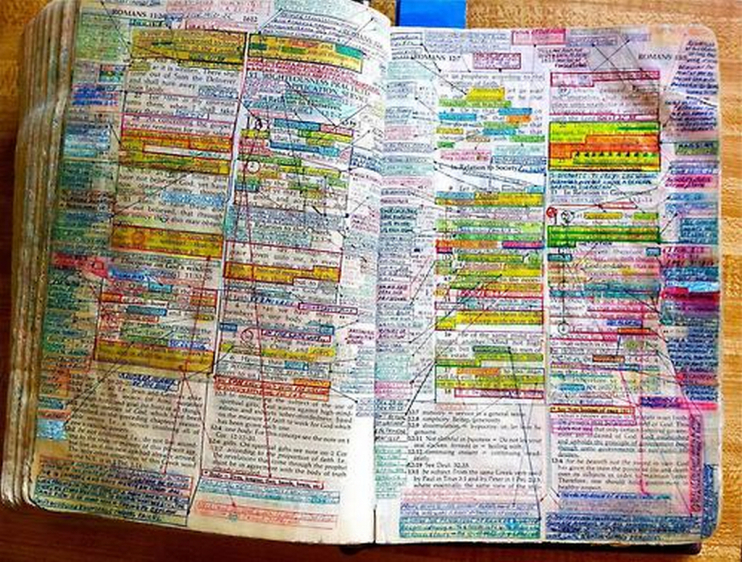I came to faith as a young adult. My first few Bibles got filled up with notes and highlights and underlines. Ephesians and Colossians especially were a snarl of ink! They wore out quickly.
I still don’t have any qualms about marking in my personal Bible. It is not desecration or disrespect; my personal Bible is not a liturgical item, blessed by the bishop for use in the Church’s service of worship. This Bible (an NKJV I bought on Amazon for $20) is a tool I use in my daily personal prayers and study. So, like any tool – a hammer or wrench – I use my Bible, and it acquires some marks in the process. (Charles Spurgeon wrote, “A Bible that’s falling apart usually belongs to a person who isn’t.”)
I do think of this Bible as something special, though. This copy of the scripture, along with the icons I use, are in a way sanctified by their inclusion in prayer to God. They’re sacred; not because of any holiness on my part, but because of the One in Whose service they are used. So I don’t idly doodle on the pages – but while studying I do make notes as needed to remind me of a connection or patristic interpretation.
I do find one issue in my own experience: Having written notes in a passage, or underlined one phrase, tends to make that emphasis or interpretation the default thing I think of. It limits my ability to be surprised when I return to that chapter, or to make subconscious or intuitive connections to other texts. Sort of like the way an interlinear Bible predetermines your understanding of the Greek text; it may be keeping you from reading with fresh eyes.
Personally I like to keep daily devotional reading distinct from text study. I love cracking open language tools, and commentaries to see how Chrysostom or Augustine got this out of that verse. But study is a different thing from daily reading in order to let the language of the sacred text shape and inform and renew my mind. So I make notes in my study Bible. But for prayerful reading, I prefer a Bible with no notes at all.







